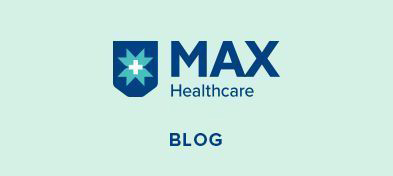
To Book an Appointment
Call Us+91 92688 80303Breaking the Silent Killer: Understanding and Preventing Cardiovascular Disease in Women
By Dr. Rajiv Agarwal in Cardiac Sciences , Cardiology , Interventional Cardiology
Sep 25 , 2023 | 2 min read
Your Clap has been added.
Thanks for your consideration
Share
Share Link has been copied to the clipboard.
Here is the link https://www.maxhealthcare.in/blogs/cardiovascular-disease-in-women
Cardiovascular disease (CVD), also known as heart disease, refers to a group of conditions that affect the heart and blood vessels. It is a broad term that includes various disorders, many of which are related to the accumulation of fatty deposits (atherosclerosis) and plaque buildup in the arteries.
Types of Cardiovascular Diseases in Women
Cardiovascular diseases (CVD) in women include ischemic heart disease, heart failure, arrhythmia, hypertension, valvular heart diseases, congenital heart diseases, and peripheral heart disease.
High Risk Factors
The lifetime risk of developing CVD for a 40-year-old woman is estimated to be 1 in 2, the risk of developing CHD is 1 in 3, and the risk of developing heart failure and stroke is 1 in 5 each in her life span.
Awareness Gap
CVD is the most common cause of death in women, which has been proven in many research studies. Most women know that cancer, especially breast cancer, is a dangerous disease, but people are unaware of the seriousness of coronary heart disease.
Coronary heart disease in women occurs at least ten years later as compared with men, but mortality remains equal or higher.
Before 2010, people did not know that CHD was the most common cause of death in women until WHO raised the issue.
Symptoms and Presentation
The differences in the outcome of CHD in men and women are due to differences in presentation and treatment. The majority of women had sudden cardiac death without previous symptoms, whereas sudden cardiac death occurs in men with alarming symptoms and with obvious causes.
The presentation of acute coronary syndrome in women is more atypical rather than chest pain. They can present with just shortness of breath, jaw and shoulder pain, nausea, dizziness, lethargy, etc.
These symptoms are often ignored by women who avoid or delay medical attention. They are often missed by medical practitioners, leading to delays in diagnosis. This is the reason why more women present with cardiac arrest in the emergency ward. The in-hospital mortality rate due to acute myocardial infarction for women is also approximately double that in men.
Factors Responsible for Differences
Factors responsible for differences in women and men are:
- Lesser awareness of CHD in women
- Unusual presentations
- Late hospital admission
- Lesser care
- More complications
The Way Forward
There should be a greater effort to reduce cardiovascular risk in women, especially after the age of menopause but also before it. This involves greater awareness in the general public that heart disease can strike women and that symptoms may not be clear. Women themselves should be motivated not to neglect their health in general and to seek urgent care for any acute symptoms as much as the men-folk.
Even medical professionals and doctors must be sensitised not to dismiss atypical symptoms, even in younger women, as merely due to anxiety.
Women should follow the same preventive strategies regarding diet, exercise, body weight, sugar, blood pressure, smoking and cholesterol as men.
Greater availability of health insurance will also ensure that more women come forward to seek urgent care and save lives.

Written and Verified by:
Related Blogs

Dr. Gaurav Minocha In Cardiac Sciences
Nov 08 , 2020 | 4 min read

Dr. Naveen Bhamri In Cardiac Sciences
Nov 08 , 2020 | 4 min read
Blogs by Doctor

Life's Simple Seven Guide to the Health of Your Heart
Dr. Rajiv Agarwal In Cardiac Sciences
Mar 07 , 2018 | 4 min read

How to take care of your Heart in winter
Dr. Rajiv Agarwal In Cardiac Sciences
Dec 27 , 2019 | 2 min read

Need for Corona Vaccine in Heart Patients
Dr. Rajiv Agarwal In Cardiology
Jul 21 , 2021 | 1 min read
Most read Blogs
Get a Call Back
Related Blogs

Dr. Gaurav Minocha In Cardiac Sciences
Nov 08 , 2020 | 4 min read

Dr. Naveen Bhamri In Cardiac Sciences
Nov 08 , 2020 | 4 min read
Blogs by Doctor

Life's Simple Seven Guide to the Health of Your Heart
Dr. Rajiv Agarwal In Cardiac Sciences
Mar 07 , 2018 | 4 min read

How to take care of your Heart in winter
Dr. Rajiv Agarwal In Cardiac Sciences
Dec 27 , 2019 | 2 min read

Need for Corona Vaccine in Heart Patients
Dr. Rajiv Agarwal In Cardiology
Jul 21 , 2021 | 1 min read
Most read Blogs
Other Blogs
Specialist in Location
- Best Heart Specialists in Dwarka
- Best Heart Specialists in Noida
- Best Heart Specialists in India
- Best Heart Specialists in Bathinda
- Best Heart Specialists in Dehradun
- Best Heart Specialists in Delhi
- Best Heart Specialists in Gurgaon
- Best Heart Specialists in Mohali
- Best Heart Specialists in Panchsheel Park, Delhi
- Best Heart Specialists in Patparganj, Delhi
- Best Heart Specialists in Saket, Delhi
- Best Heart Specialists in Shalimar Bagh, Delhi
- Best Heart Specialists in Ghaziabad
- Best Heart Specialists in Pusa Road
- Best Heart Specialists in Vile Parle, Mumbai
- Best Heart Specialists in Sector 128, Noida
- Best Cardiologists in Delhi
- Best Cardiologists in India
- Best Cardiologists in Saket
- Best Cardiologists in Dehradun
- CAR T-Cell Therapy
- Chemotherapy
- LVAD
- Robotic Heart Surgery
- Kidney Transplant
- The Da Vinci Xi Robotic System
- Lung Transplant
- Bone Marrow Transplant (BMT)
- HIPEC
- Valvular Heart Surgery
- Coronary Artery Bypass Grafting (CABG)
- Knee Replacement Surgery
- ECMO
- Bariatric Surgery
- Biopsies / FNAC And Catheter Drainages
- Cochlear Implant
- More...






